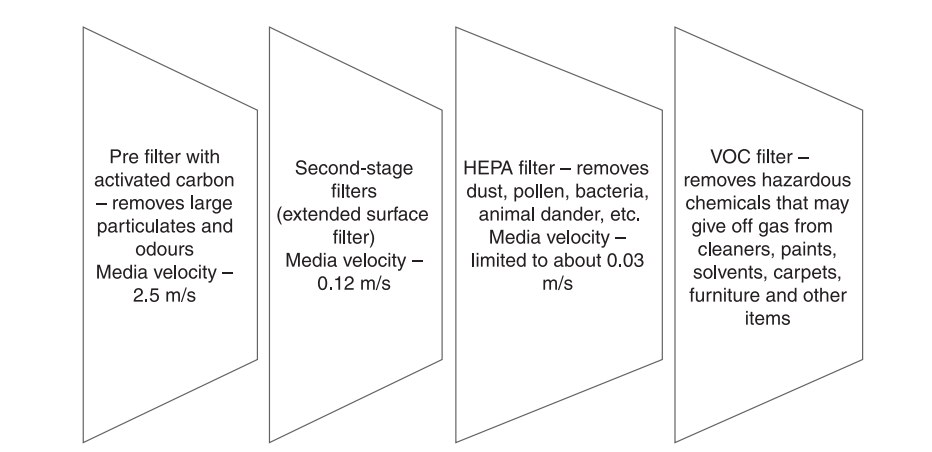There are different forms of air filters used in clean rooms, named foldable filters, bag filters, extended surface V-shaped filters, box filters, folding filters, etc. Square or bubble panel filters are most commonly used in air purification systems in homes and workplaces. In a broad sense, the air purification equipment used in residential air treatment systems can be mainly divided into six categories, such as fiberglass filters, type filters, filtersthat can be cleaned and reused, electret filters, deep pleated filters, and electronic air purifiers. Except for electronic air purifiers, textile media is used in all cases. For more stringent requirements, use HEPA/ULPA filters.
Cleanroom manufacturers attach great importance to air particles, and the goal of most cleanroom design and manufacturing companies is to eliminate air particles of size 0.5 or larger, which is usually the function of cleanroom air filters. However, some industries are currently implementing smaller air particle standards, with most indoor air pollution coming from harmful non biological and biological agents. Therefore, the clean room system must minimize indoor air pollution and remove indoor pollutants to an appropriate level to meet the requirements of the ongoing process (Sutherland, 2008b). For the application of simple filters, use extremely thin and hard non-woven fabrics, which vary in thickness between 0.1 and 5 millimeters and have a weight lower than that of tubular filters. They also have a papery appearance, as most of them are mixed mesh and spunlace filters, which are shaped and folded in a star shape, helping to provide higher stiffness and larger surface area of the filter. This in turn has a positive impact on the pressure drop (lower pressure drop).
Filters designed to handle air are roughly divided into three categories (Sutherland, 2008a)
. The primary filter is designed to capture most of the larger air dust particles with a size of 5-100 meters and has a high dust capacity. These are usually dry panel or roll filters that can operate at relatively high airflow speeds.
Secondary filters, with finer media, are used to capture and retain finer particles passing through the primary filter, such as particles with a diameter of 5 microns or smaller. These filters can be unit or panel type, bag type, or bag type, with greater filtration depth and typically lower maximum air velocity, approximately 0.12 m/s or less. Ultra fine or final filters, even submicron particles, can produce very high efficiency (99.95% or higher). The main types here are HEPA and ULPA filters, which are made of high quality synthetic square fiber with a diameter of submicron meters and are made in a tightly folded packaging form: in this case, the air velocity is limited to approximately 003 m5.
HEPA filters and ULA filters are designed for use with a flow rate greater than 03 meters. The HEPA performer has a removal rate of 99 99% for surfaces 03 and larger. The mass transfer efficiency of Ul PA for 1-02 m particles is 9.
The above figure shows a basic multi-stage overcurrent system combined with VOC filters. A single stage system using low or medium efficiency overcurrent filters has the lowest investment cost, but does not process very fine pollutants. A multi-level system will eliminate all atmospheric pollution, but requires higher capital investment. The cost of the filter itself will be very low, as cheaper primary filters can extend and protect the lifespan of more expensive filters. Using pre attenuators, HEPA filters, and ULPA filters can be used in clean room environments for several years. In addition, due to the peak low air flow rate and increased static pressure over time, Therefore, HEPA filters and ULPA filters will become more efficient as the filter load increases.